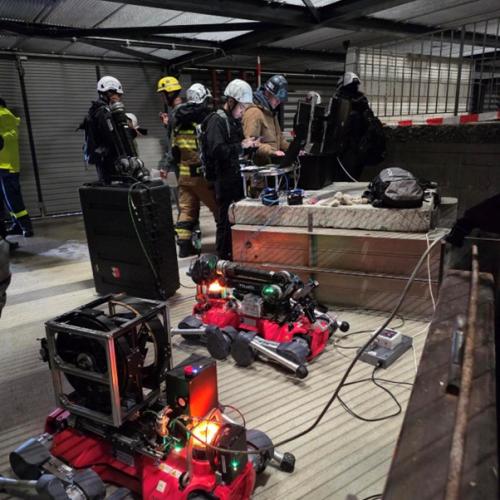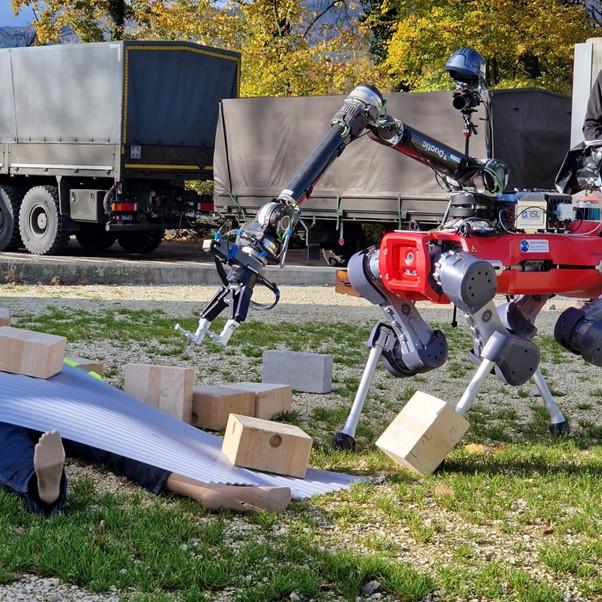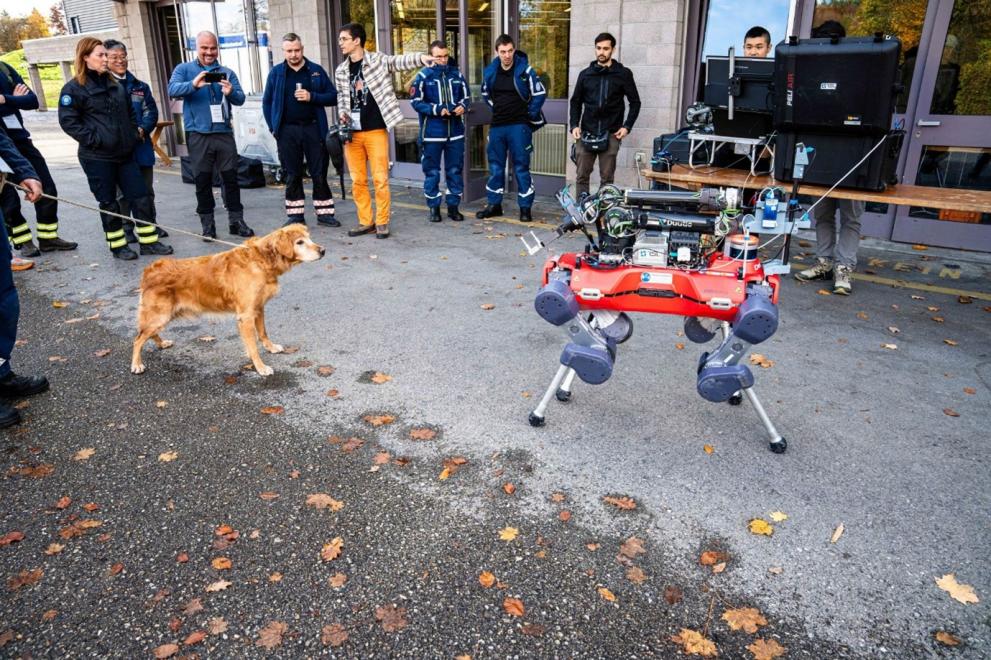
SYNERGISE: Enhancing operational safety through autonomous systems
The SYNERGISE project, a Horizon initiative, focuses on improving the operational effectiveness and safety of first responders during complex emergencies.

Its toolkit integrates autonomous and semi-autonomous robotic systems, wearable sensors, localisation devices, augmented-reality services, and AI-powered data fusion into an Incident Management and Command-and-Control platform. ASTRIAL GmbHopens in new tab, the project’s Technical Coordinator, oversees the integration of technological developments and ensures that the tools meet operational needs and user requirements.
A central component of SYNERGISE is the ANYmal quadruped robot, developed by ETH Zurich, which has been adapted within the project for use in disaster environments. Equipped with both haptic and visual sensors and an integrated robotic arm, ANYmal can autonomously navigate through damaged structures, open doors, operate valves and switches, and clear debris , tasks that directly support and protect human responders.
“AI allows the automation of tasks that are too dangerous, time-consuming, or cognitively demanding for human responders,” explains Dr Sabina Ziemian, project representative for SYNERGISE. “From real-time mapping of unstable environments to detecting victims, recognising hazards, and identifying safe paths, AI enables autonomy in robotic systems and enhances the safety of first responders.”

AI-powered functions such as object detection, task management, and threat identification also help teams process data more quickly and make sense of complex, fast-changing environments. “Our users really appreciate the enhancement of safety by using ANYmal in situations where the risk factor is high, ANYmal takes over certain tasks previously preformed by humans” says Dr Sabina Ziemian.
While progress is significant, maintaining reliable communication in disaster areas remains one of the biggest challenges. Robots rely on both onboard autonomy and external coordination, but both are limited when networks are damaged or unavailable. Complex control interfaces, inconsistent behaviour, or limited connectivity can reduce trust and slow adoption.
“AI tools can sometimes replace human intervention, but they are not yet trained for the cognitive complexity that humans bring to real operations,” Ziemian adds. “Understanding the limits of these technologies, and knowing when and how to trust them, is essential.”

ANYmal enhances the autonomy, safety, and effectiveness of search-and-rescue missions, minimising risk to human responders.
By combining robotics, artificial intelligence, and human oversight, SYNERGISE illustrates how technology can strengthen operational capability while keeping responders out of harm’s way.

The Knowledge Network editorial team is here to share the news and stories of the Knowledge Network community. We'd love to hear your news, events and personal stories about your life in civil protection and disaster risk management. If you've got a story to share, please contact us.